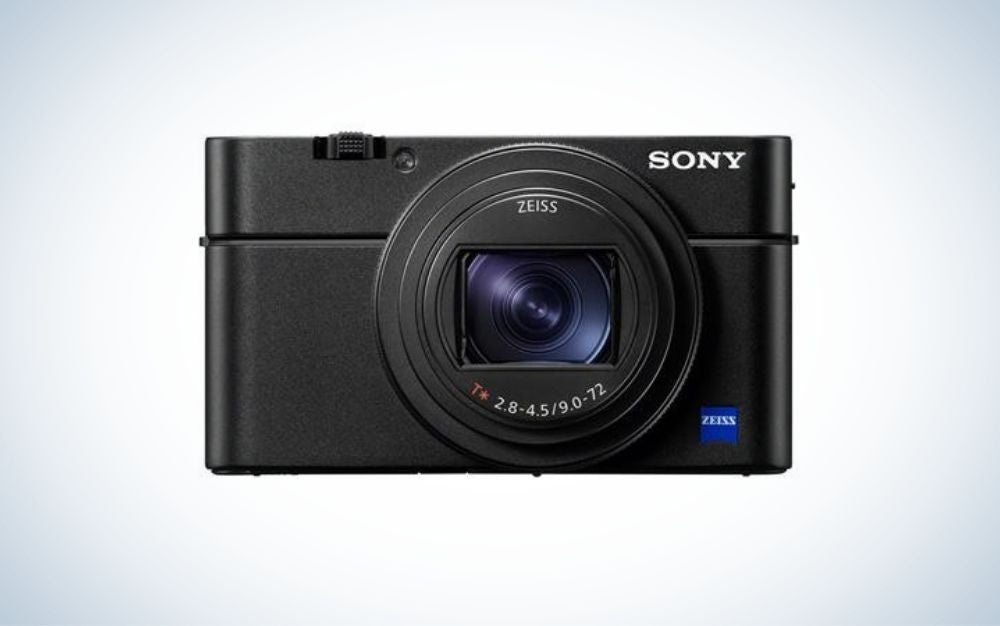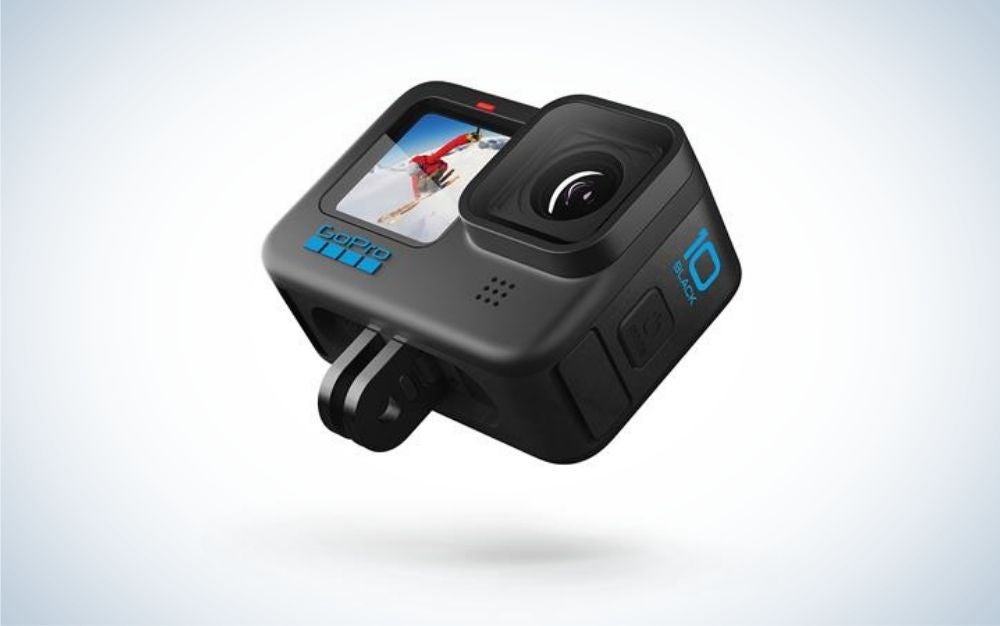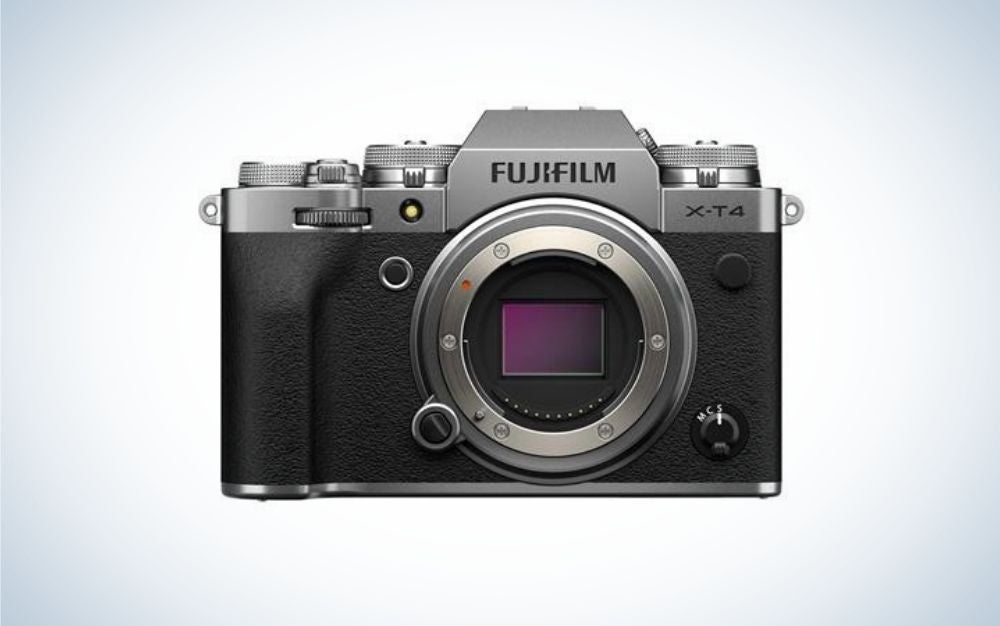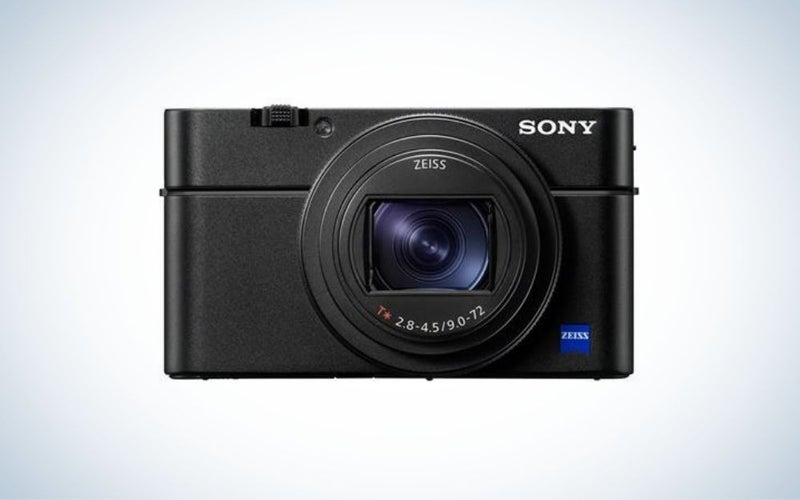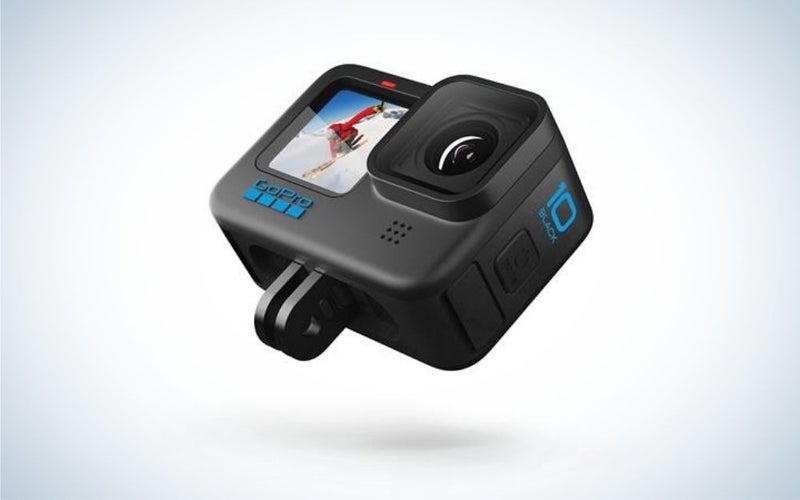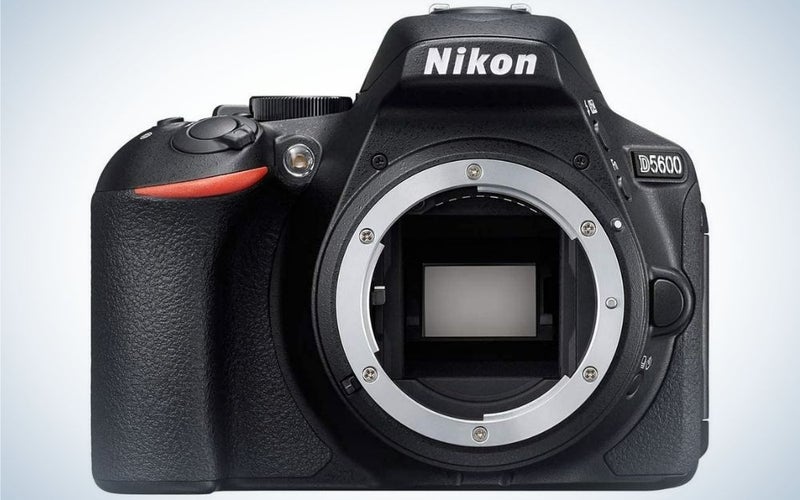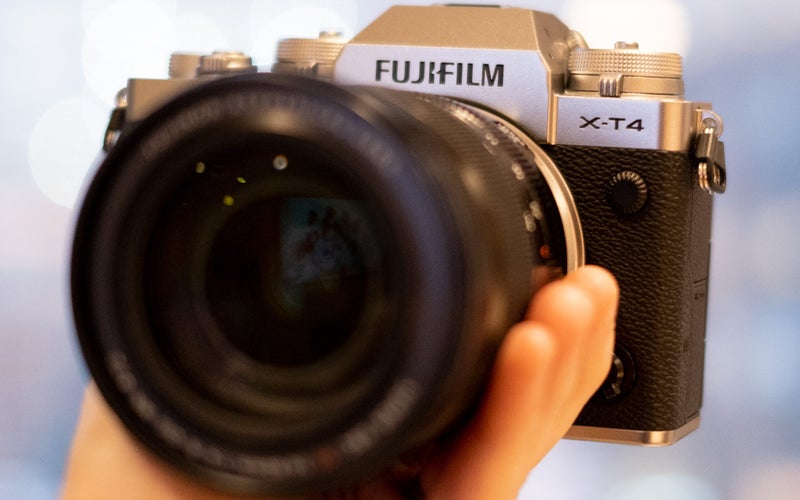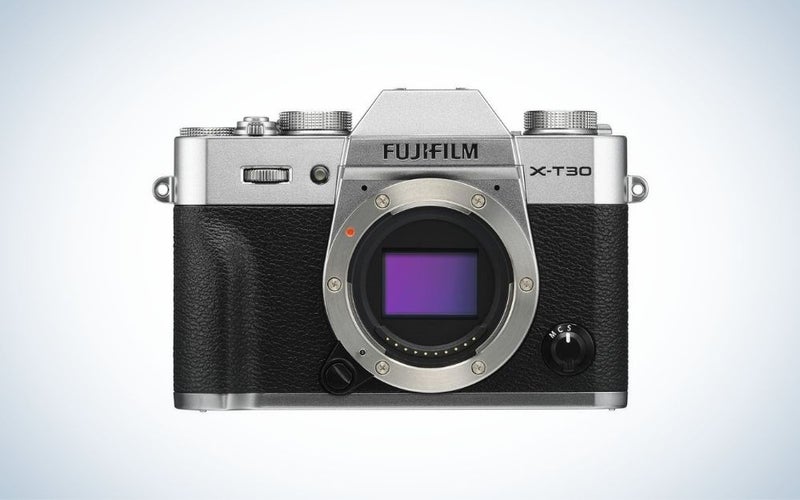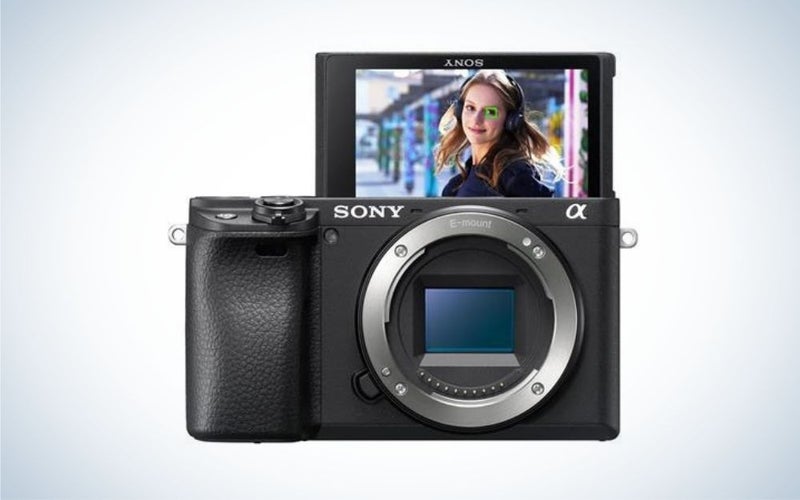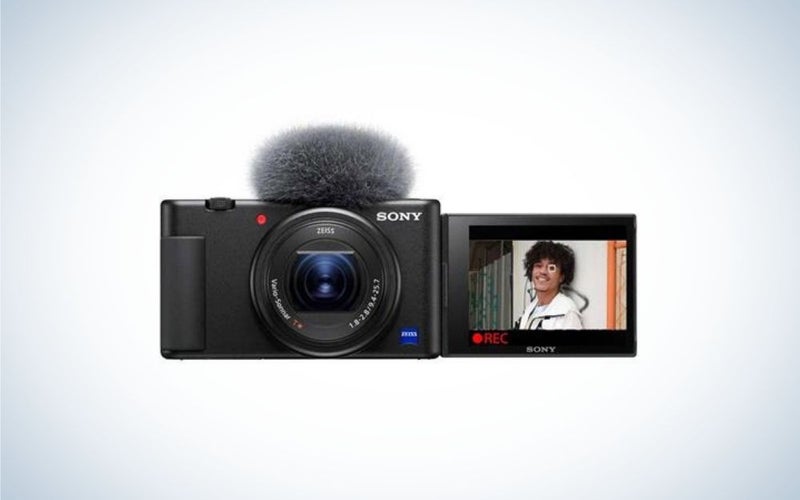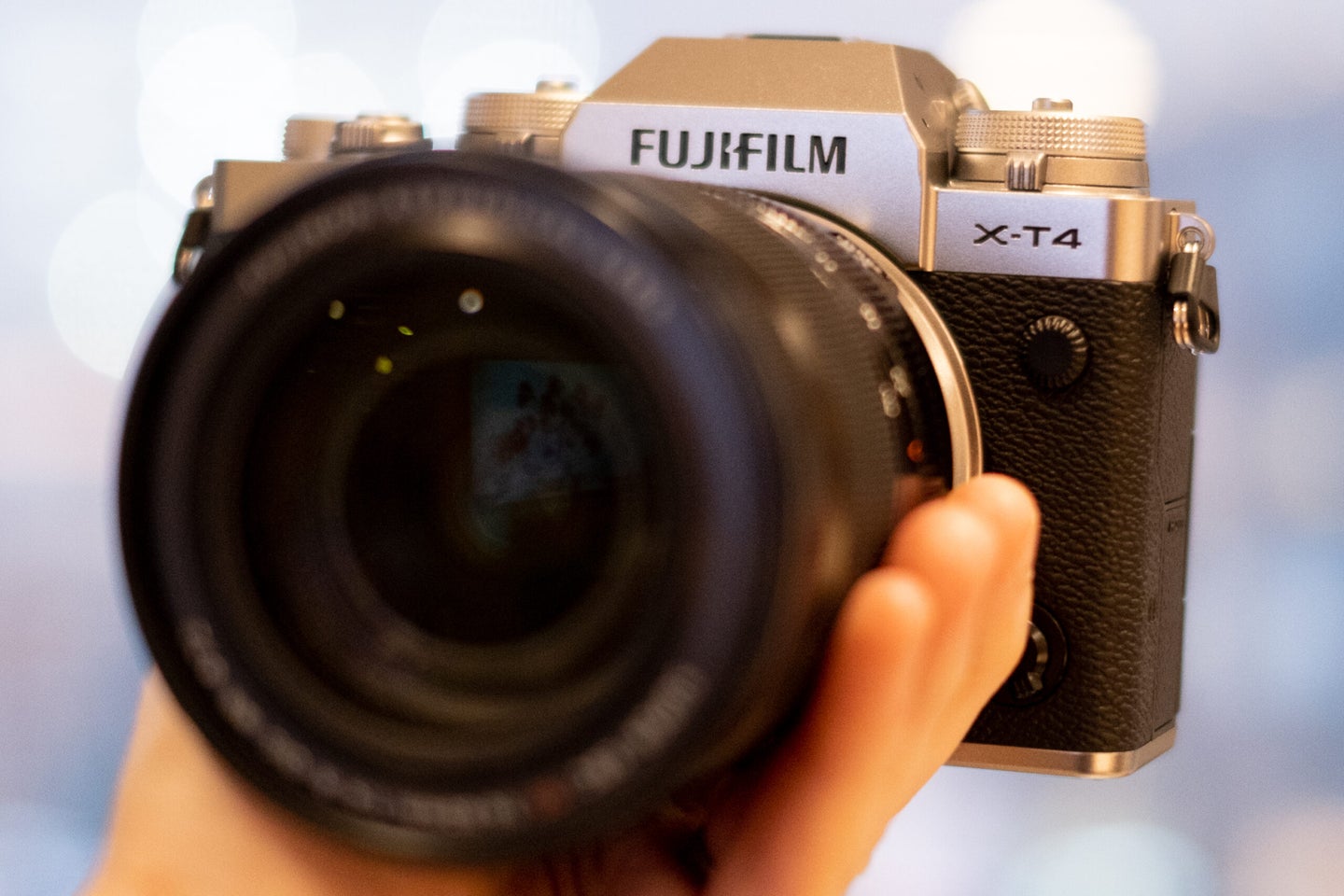
Choosing the best travel camera for your trips can be an overwhelming prospect. You’re faced with a ton of great options from advanced mirrorless systems to compacts and action cameras. It’s easy to get lost in the noise. Then, when you consider features like video capabilities, screen type, and sensor size, it can be downright confusing. All of these features need to fit your photographic—and budgetary—needs. Knowing what you intend to use your captures for and what is most vital for you when traveling with a camera is the best place to start when deciding on the best travel camera. The cameras on this list fit almost any kind of traveler.
Here are our picks for the best travel cameras in 2022:
- Best overall: Sony Cyber-shot DSC-RX100 VII
- Best for the action: GoPro HERO10
- Best DSLR: Nikon D5600
- Best mirrorless: Fujifilm X-T4
- Best mirrorless on a budget: Fujifilm X-T4
- Best for video: Sony a6600
- Best for video on a budget: Sony ZV-1
Things to consider before buying a travel camera:
When selecting the best travel camera for your trips, there are a handful of things you should consider.
Your photography style
It is essential to consider what kind of traveler you are and how you intend to use the camera. For example, if you don’t mind traveling heavy and want quality over anything else, your camera needs will differ from someone who likes to travel fast and light. Likewise, a backpacking trip through a jungle could call for a different camera than a luxury cruise. Deciding on what your priorities are first will help you narrow down all of the options available to you in a camera.
Size
You’ll want to pay attention to both dimensions and weight in your setup. The amount of space that a camera takes up in your bag is significant when maximizing what you can bring along. Carrying a heavy camera around on your back while in between destinations or holding it for long periods while out and about gets old fast, so weight does make a difference. Even a few ounces can start to weigh you down on long treks.
Features
You’ll want to choose a camera that offers features you’ll actually use, but skips others that won’t be necessary For example, if you want to take lots of selfies or group photos, a camera with a screen that flips around will be extremely helpful. Or, perhaps you would like to take lots of videos and share your travels. If so, paying attention to the video recording capabilities is a good idea.
Ruggedness and weather sealing
Moisture and sand don’t play nicely with electronics. Hard falls can do even more damage. If you’re planning to take your camera out into the wilderness or other treacherous terrain, opt for a camera with robust weather sealing. Some cameras come with an IP (ingress protection) rating that will tell you exactly how much exposure to water, dust, and shocks they can withstand. Even if you’re not headed into the jungle, travel can take a toll on cameras, so ruggedness always comes in handy.
Image size and quality
Not every photo is destined to become a giant print. If you plan to use photos and videos solely for social media and to remember your trip, spending money on a camera with exceptional image quality and large files is unnecessary. However, if you want to make large prints of your images or produce high-quality films from video footage, you will want to invest in a camera with more megapixels and higher video resolution. Just remember, more pixels require more storage, so don’t skimp on those SD cards.
Cost
As with most purchasing decisions, cost is a significant factor. This is especially true with a travel camera, as you are likely putting an expensive piece of equipment at risk of getting broken, lost, or stolen, depending on how you use it. Finding a camera that isn’t pushing your budget to the max may be a good idea because of the risk. Insuring your equipment before trips is also recommended.
Best travel camera overall: Sony Cyber-shot DSC-RX100 VII
Adorama
Key features:
- Weight: 10.65 oz
- Sensor size: 1”
- Resolution: 20.1 megapixels
Why it made the cut:
The built-in lens offers a fast aperture and a large focal range. It also has a surprising suite of advanced features.
Pros
- 4K video
- Versatile 24-200mm zoom lens
- Fast autofocus with AF points covering nearly the entire field of view
Cons
- Pricey for a compact
The newest iteration of the Sony RX100 is an excellent bridge between a compact camera and a DSLR or mirrorless option. Its pocket-ready size makes it easy to carry and pack, an important feature for a travel camera. The smooth finish on the camera body does make it a bit slippery, but a wrist strap can help with carrying.
Despite falling into the compact category, it has the option to use full manual mode (and other staples like aperture and shutter priority), allowing you to have complete control over your images. The 24-200mm equivalent lens covers both the wide-angle and telephoto sides of things, which is helpful for documenting a range of subjects on your travels. Plus, with a maximum aperture of f/2.8-4.5, you can still get nicely blurred backgrounds for drawing attention to your main subject. It’s also handy for shooting in low-light if you don’t want to rely on the built-in pop-up flash.
The RX100 VII has 4K video recording with human and animal eye autofocus, which mimics Sony’s higher-end mirrorless models. The newly designed sensor and BIONZ X image processor allow for extremely fast autofocus, with 68% of the image area covered by AF points.
Best action camera: GoPro HERO10
Adorama
Key features:
- Weight: 5.39 oz
- Sensor size: 1/2.3-inch
- Resolution: 23 megapixels
Why it made the cut:
GoPro continues to set the bar for stabilization with the HERO 10. Along with a faster processor, this is one of the best action cameras. Plus, it’s entirely waterproof without needing a case, meaning you can take it as-is on your underwater dives or those fresh powder days.
Pros
- 5.3K video
- Impressive stabilization
- Extremely compact
- Waterproof without a case
- Tons of mounting accessories
Cons
- Not the best in low light conditions
- Limited control
The GoPro HERO 10 features an upgraded GP2 processor, allowing for faster performance across the board. It also results in twice the frame rate as the previous version, coming in at 60fps at 5.3Kand 120fps at 4K. Those high frame rates are crucial for clean action shots.
GoPro’s Hyper Smooth image stabilization system is truly impressive, offering several modes depending on the activity in which you’re participating. It’s even burly enough to smooth out footage from high-impact activities like mountain biking or skiing.
The new processor also allows for better still image capabilities, with 23 megapixel images possible. This is much higher than other action cameras out there, so this is an excellent option if stills are as important to you as video. Plus, you can take RAW photos, so if you like the option of more control while editing your images, the GoPro can meet that need.
The lowlight capabilities do leave a bit to be desired, despite being improved from previous versions, so that is important to consider. You can add mods to help with this, but sticking to brighter conditions will give you the best quality.
Best DSLR camera: Nikon D5600
Amazon Renewed
Key features:
- Weight: 14.7 oz (body only)
- Sensor size: APS-C
- Resolution: 24.2 megapixels
- Also available as a kit with the 18-55mm lens
Why it made the cut:
This DSLR offers just the right selection of advanced features while keeping the weight, size, and price down.
Pros
- Small for a DSLR
- Vari-angle screen
- Great image quality
- Tons of lens options
Cons
- No 4K video
Despite its age, the D5600 remains one of the best DSLR cameras for beginners. The camera’s grip and textured surface make it easy to hold for extended periods, useful for excursions where you may want to keep your camera out and ready. It also offers tactile controls for operating the camera without digging into a ton of menus.
The image quality of this camera is on par with higher-end DSLRs with a resolution of 24.2 megapixels. Even at higher ISOs, the D5600 performs well, producing sharp images with reasonable noise. It also has built-in WiFi and Bluetooth connectivity, allowing you to connect with the SnapBridge app for instantly transferring photos to a smartphone.
While mirrorless provides some undeniable advantages, some shooters still prefer the feel of a DSLR or want to use older lenses without an adapter. The D5600 is a fantastic camera for those individuals wanting a DSLR for travel because of the compact size and lower weight.
Best mirrorless camera: Fujifilm X-T4
Jeanette D. Moses
Key features:
- Weight: 1.16 lbs
- Sensor size: APS-C
- Resolution: 26.1 megapixels
- Also available as a kit with the 16-80mm f/4 lens
Why it made the cut:
Rugged construction and small size make this an excellent travel companion.
Pros
- 4K video at 60fps
- In-body stabilization
- Attractive in-camera film presets
- Tactile camera controls
- Solid weather sealing
Cons
- Expensive for an APS-C camera
The newest version of Fujifilm’s X-T camera is an ideal choice for a hybrid shooter who wants to take both photographs and video on their trips. It has newly added in-camera image stabilization and a vari-angle touch screen that makes it easy to record yourself (perfect for solo travelers). An updated autofocus system also has improved tracking.
On the still side, things are just as impressive. The X-T4 has a newly redesigned shutter capable of 15 fps continuous shooting. The new shutter mechanism is also quieter, which will help in certain situations you may come across on your travels. The in-camera film simulations may also be appealing to users who want a consistent style but don’t want to spend loads of time editing while on the go.
One unique feature of Fujifilm cameras that holds true with the X-T4 is the rather old-school exposure dials. Unlike most cameras, there is no digital readout on the top of the camera to see exposure, and the mode dials are freed up for things other than changing exposure settings. Instead, the dials are like those traditionally found on 35mm film cameras; a physical dial for shutter speed and ISO are featured on top of the camera. In addition, many Fujifilm lenses have manual aperture rings.
The body itself boasts solid weather sealing and, when paired with a WR (weather resistant) lens, it’s more than happy to stay out and shoot in the rain or snow.
Best mirrorless camera on a budget: Fujifilm X-T30
Adorama
Key features:
- Weight: 13.3 oz
- Sensor size: APS-C
- Resolution: 26.1 megapixels
- Also available as a kit with the 18-55mm f/2.8 lens
Why it made the cut:
If the X-T4 is enticing but out of your budget, the X-T30 offers the same sensor size, resolution, and many important features at a lower price point.
Pros
- Budget-friendly
- Small size
- Excellent image quality
- 4K video
Cons
- No in-body stabilization
- No weather sealing
The X-T30 is a great camera for the price. You get the same sensor and resolution as the more expensive (and larger) X-T4. The image quality is still superb as a result. The autofocus options are solid, giving you reliable results in most settings. And, as with other Fujifilm cameras, there are built-in film presets, which may appeal to some users.
The video quality of the X-T30 is also impressive for a budget option. It can shoot 4K at 30fps. But, unfortunately, it is limited to clips of 10 minutes when shooting at 4K. However, if shorter clips of your adventures are all you need, this camera will still serve you well.
The lack of weather sealing is also something to consider, depending on where your travels may take you. However, if you don’t plan on taking this camera on rugged, backcountry adventures, it shouldn’t be too much of a problem.
Best video camera: Sony a6600
Adorama
Key features:
- Weight: 1.11 lb
- Sensor size: APS-C
- Resolution: 24.2 megapixels
- Also available as a kit with the 18-135mm zoom lens
Why it made the cut:
A small body with industry-leading autofocus capabilities and unlimited 4K video recording make this camera a great travel camera option for those wanting to produce video content of their travels.
Pros
- In-body stabilization
- Impressive autofocus
- Unlimited 4K recording
Cons
- Single UHS-I card slot
The Sony a6600 is a small camera geared towards video enthusiasts and vloggers. With unlimited 4K recording, in-body stabilization, and reliable autofocus with tracking, you’ll be able to capture long, beautiful clips of your trips. The battery life alone makes this a great option for taking along on your travels, but especially for video creators. It is worth noting, however, that the battery can only be charged while in the camera unless you buy a separate external charger.
Despite the APS-C sensor, stills from the a6600 are fantastic as well. The price jump to a full-frame sensor isn’t necessary for most users when you can get this quality in a smaller, more affordable package. Because of the excellent Sony autofocus system, this camera is excellent for sports and action photography, something that would be useful for many types of travel.
Best video camera on a budget: Sony ZV-1
Adorama
Key features:
- Weight: 10.4 oz
- Sensor size: 1”
- Resolution: 20.1 megapixels
Why it made the cut:
One of the few cameras available that is fully explicitly designed for vlogging, the ZV-1 is a pocketable, affordable video powerhouse.
Pros
- Compact and lightweight
- Excellent autofocus
- Flip-out screen great for vlogging
Cons
- Less than impressive battery life
To create this vlogger camera, Sony used much of the tech featured in the more expensive RX100 line, resulting in superb quality in a bit more stripped-down package. They also added a handgrip on the ZV-1, making it easier to hold. And, the screen flips to the side, making selfies easier to record even when you have accessories on the hot shoe.
Despite being a small point-and-shoot camera, you get 4K video and access to tons of AF points across the sensor. There is even a focus mode that allows you to easily shift focus from your face to elsewhere in the foreground, helpful for showing off your travel finds.
While the quality of the 24-70mm lens is solid, having something a little wider would have been ideal. A selfie stick may be beneficial if you are trying to record yourself for longer periods or capture a group video. The battery life is also less than ideal, but you can pick up spares.
FAQs
Q: Are mirrorless cameras better for travel?
Mirrorless cameras are often smaller than DSLRs because they can cut out all the space and weight required for the mirror mechanism. That also gives mirrorless cameras fewer moving parts, which means fewer things to break during your trip. As mentioned above, lighter and smaller cameras are ideal for travel, making mirrorless a frequently preferred option for travel cameras.
Q: Is GoPro good for travel photography?
GoPro cameras are excellent for travel for a few reasons. First, they are built to withstand extreme conditions, so you don’t have to baby them by any means. Second, they are tiny. You can easily throw one into your backpack or even a jacket pocket, making lightweight travel more possible. Lastly, they have excellent video capabilities and pretty solid still photo specs. However, they are limited in exposure control (among other things), and the ultra-wide-angle lens may not be ideal for all settings. There are tradeoffs, but overall it is an exceptional pick for travel.
Q: Can an iPhone 12 replace a DSLR?
The iPhone 12’s camera is impressive, no doubt. And as photographer Chase Jarvis once said, “the best camera is the one that’s with you.” Depending on your goals for your travel photography, the iPhone can absolutely replace a DSLR. However, if you want more control over your images or want higher quality files, a dedicated camera, whether a DSLR or something else, will be the way to go.
Methodology
The editors and writers at Popular Photography have decades of photography experience in just about every genre and have covered and reviewed just about every major camera on the market. When selecting the products in this list of best travel cameras, we looked at a wide range of important features in travel cameras. We researched the different camera choices available and compared specs and image and video quality. Size and weight, sensor size, autofocus abilities, battery life, and lens options were just some of the considerations. In addition, we noted any unique attributes or settings available on the cameras. We also aimed to choose offerings at different price points and cover the range of camera types from DSLR to compact. All of these considerations allowed us to compile a list of cameras suitable to various travel styles and capture needs.
Final thoughts about the best travel camera
Choosing the best travel camera will come down to your travel style (rugged adventures or luxury stays), documentation needs (stills or video), and how much control you want with your camera. For most users, the Sony Cyber-shot DSC-RX100 VII is a well-rounded option that meets a variety of needs. In addition, it offers more quality and features than a phone would, making it a worthwhile upgrade.
The post Best travel camera in 2022 for capturing your adventures appeared first on Popular Photography.
